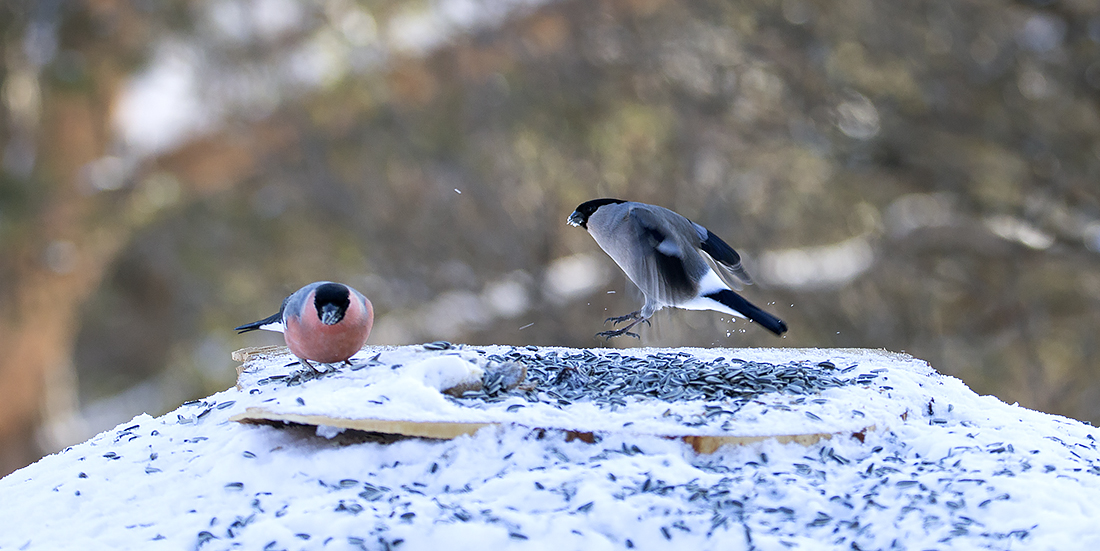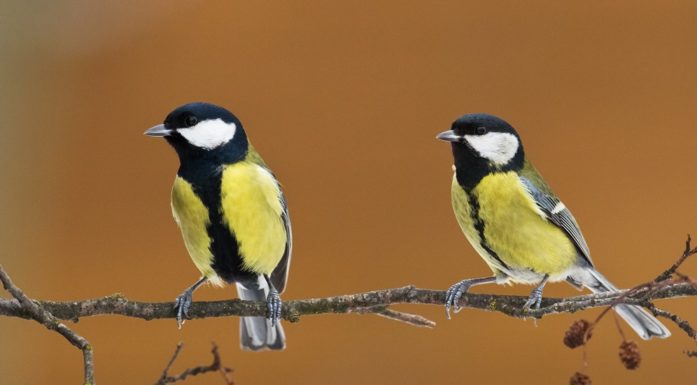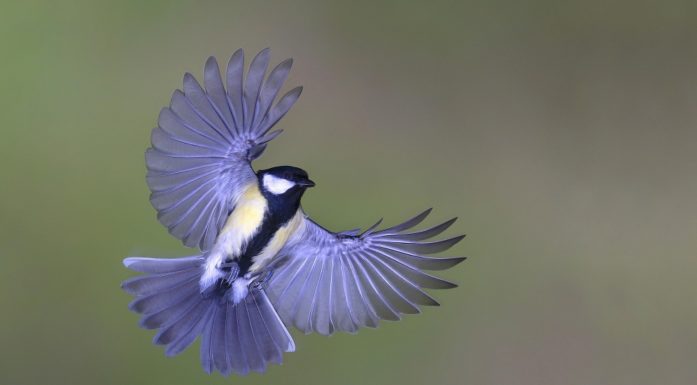In the bullfinch world, she gets to decide
A lot of birdwatchers like the bullfinch. They’ve probably noticed that the female can chase off the more colourful male from the bird feeder. That makes this species different.
“The bullfinch is the only one of our songbirds where the female dominates the male year round, that is, she ranks highest,” says Professor Emeritus Olav Hogstad at NTNU’s Department of Natural History.
At the feeder the female may chase away the males and lay claim to the larder. But she’s happy to give her mate access.
Hogstad recently confirmed that bullfinch pairs (Pyrrhula pyrrhula) may stay together for several years. Their behaviour and gender divisions obviously provide some advantage but are also quite unusual.
In several bird species, the female is the one who makes the decisions during nesting season, while the male is relegated to doing her bidding. The female decides on nest placement, nest building, and the incubating of eggs and feeding of the young. As soon as the chicks come into the picture, she becomes boss.
But at other times of the year, the male tends to be socially dominant. That is, males rank higher than females. They usually have first dibs on food sources, priority when it comes to protection against dangerous enemies and so on.
But a few other exceptions exist.
- You might also like: Bullfinches stick together for years
Article continues below photo.
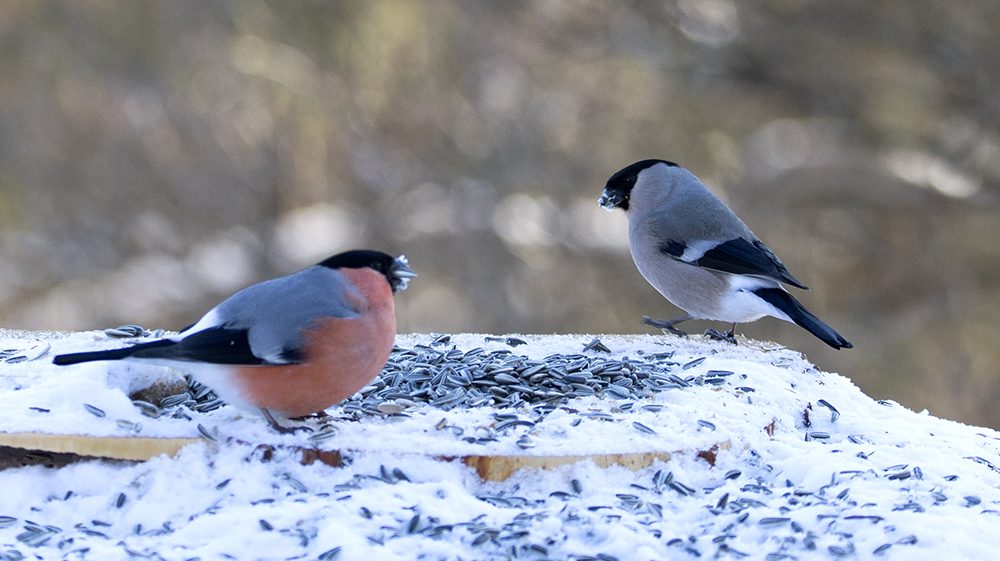
In several bird species, the female is the one who makes the decisions in the nesting season, with the male doing her bidding. With bullfinches, it’s that way all year long. Photo: Nina Tveter, NTNU
Reverse gender roles
Some wading birds also have gender roles that differ from most typical bird patterns.
Among dotterels (Charadrius morinellus), parental responsibility is largely the job of the males. He incubates the eggs and cares for the young.
The phalarope (Phalaropus spp) comprises three species, where the females are the more colourful and stronger sex. This is unusual for birds, as are the reversed gender roles. Female phalaropes compete for both males and nesting territory. She defends the territory and the smaller male against enemies. He takes care of the eggs and young.
The female is also the larger bird in several curlew and godwit species. These include the black-tailed godwits, bar-tailed godwits, whimbrels and Eurasian curlews.
- You might also like: Risking life for wife
Females often bigger in birds of prey
Although male birds often have splendidly colourful plumage and the females are much more discreet in their colouring, the sexes of most species are usually about equal size. The males are sometimes only slightly larger.
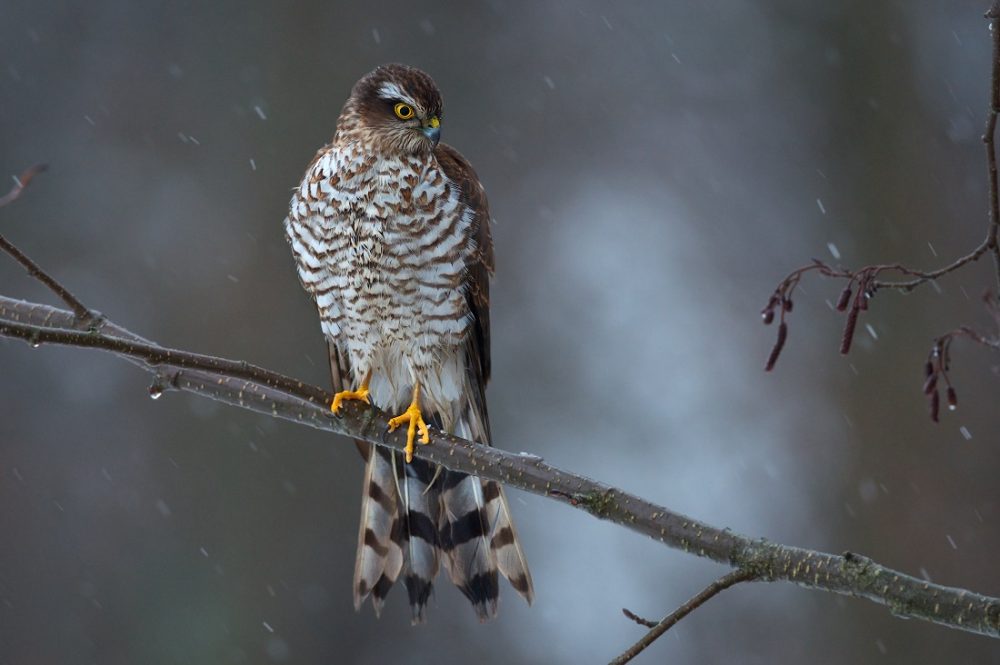
Among sparrowhawks, which mainly survive on a diet of birds, the female is almost twice as heavy as the male. Photo: Colourbox
There are also several exceptions for birds of prey.
“In most birds of prey, the female is larger than the male. The size difference is greatest in species that mainly eat fast-moving prey animals and least in species that feed on less quick prey,” Hogstad says.
Among sparrowhawks, whose diet consists mostly of other birds, the female is almost twice as heavy as the male. In northern goshawks, the female is up to 20 per cent bigger than the male.
But the size difference is minimal in buzzards, which primarily feed on small rodents.
The large gender difference in the hawks has several possible explanations. One may be that the female is responsible for guarding the nest, sitting on the eggs and feeding the young. The male hunts and feeds the female, who divides and distributes the food to the chicks. He is small and fast and can catch whatever prey is most abundant.
The reasons may be numerous and probably vary from species to species. But bullfinches are still special.
